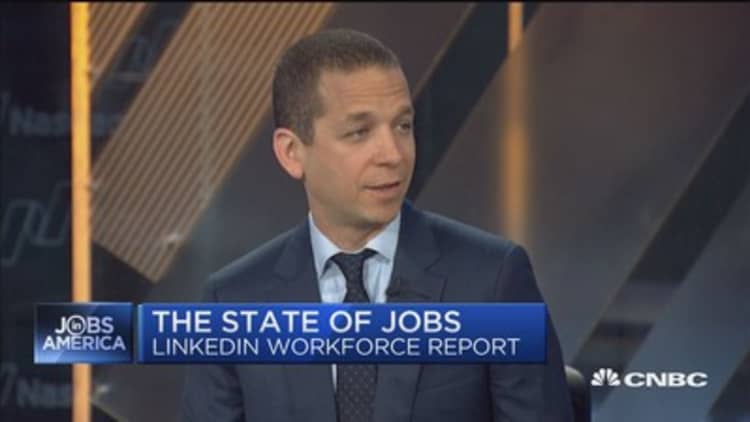
Employers in the United States hired fewer people in February, but year-over-year hiring remained strong, according to the LinkedIn Workforce Report, a monthly analysis of employment trends.
The report stated that though overall hiring was down in most industries in February from January, employers hired 1.4 percent more workers than in February 2016. January and February 2017 were among the strongest consecutive months for hiring since summer 2015, according to LinkedIn.
LinkedIn draws data from its 133 million user profiles, 20,000 company profiles, 3 million monthly job postings, and 50,000 skills workers can add to their profiles to compile this report.
"The question is how much of this is politically motivated," LinkedIn Executive Editor Dan Roth said Wednesday on CNBC's "Squawk Box." "Are our employers feeling like they understand what's going on, that they can start hiring again?"
"It's unclear exactly what's going on, but it matches up against the political calendar," he added.
The oil and gas industry "continued to rebound in February," with seasonally adjusted hiring up over 50 percent since June, "the low point of the industry's recession," the report said.
In addition, workers moved to Atlanta, Dallas and Houston from Chicago and New York, and all of those cities lost employees to Seattle, Portland, Oregon, and Denver, which continued to welcome workers in droves, according to LinkedIn.
The LinkedIn report also tracks skill gaps in the top 10 U.S. cities, which it defines as "a mismatch between the skills employers need — demand — and the skills workers have — supply."
The report showed San Francisco, Houston and Washington as having the biggest skill gaps due to a lack of workers with service industry experience. Most in need nationwide are workers with health-care management and teaching skills.
"The places where there are the biggest skills gaps are the places that are most expensive," Roth said, adding that most of the much-needed jobs are not high-paying, raising an issue of incentive.
"If you live in a city where the skills are in abundance, you should really think about going to one of these cities where they are in high demand," Roth said. "The problem is these are also really expensive cities."


